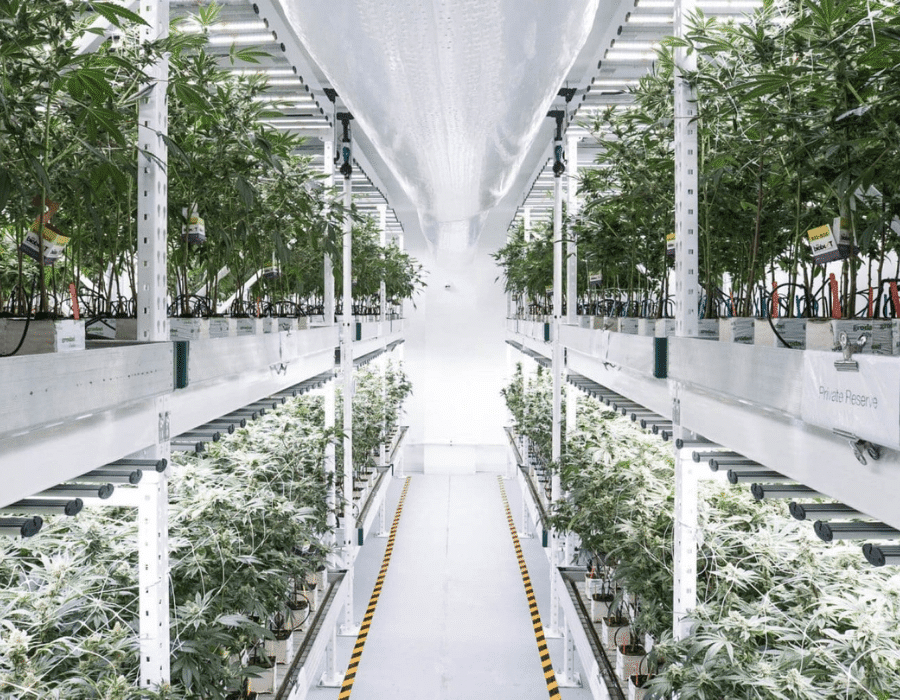The cannabis industry is poised to become a revolutionary influence in modern culture. Due to high-rising demand in the recreational sector and an overwhelming interest in medicinal practices with the discovery of CBD and other cannabinoids, the black market for the ‘illegal drug’ is soon to be reminiscent of a bygone era.
The pioneers of cannabis cultivation grappled with first learning about its potentials, not to mention knowing little of its genetic diversity. However, because of our forefathers and mother’s ground-breaking fortitude, learning how to grow the plant efficiently has become one of the hottest topics in modern times.
In recent years, technological advancements in many areas of cannabis cultivation and horticulture continue to revolutionize the industry, especially in indoor farming operations. Robotics and Artificial Intelligence (AI) practices perform many cultivation tactics, allowing remote contact with the grow environment 24/7.
Nutrients and water applied to plants are easily accomplished with a simple tap of a button on a smartphone. Additionally, lighting technology, HVAC systems, and plant health direct a cannabis company’s vision of a profitable return on investment (ROI).
Undoubtedly, the question that comes to mind for many entrepreneurial business owners is, “How can the operation maximize space”? Massive warehouses filled with a room full of plants are a popular setting for many lucrative businesses. But what if a grower could double the output within the same space?
Taking cultivation up a notch, many large cannabis companies have implemented vertical growing techniques into their operations. By growing in tiered levels, doubling or tripling plant count considerably increases profit margins by maximizing every square foot of space in the grow room.
Adding high-tech environmental controls and automation into the design showcases a precise business plan for future development. As the industry continues to forge into new territories, vertical farming is already becoming renowned as the next generation in cannabis cultivation.
Why Grow Up?
Visualizing the Future – As populations continue to grow and land availability becomes scarce, ‘space’ becomes an issue in cannabis cultivation strategies. Corporations looking to purchase real estate to invest in either a new company or expand an existing business now spend considerably more in today’s volatile real estate market than they might have just a few years ago, assuming that there is still land available to purchase.
While large swaths of open space still exist, people are on the move, especially since the pandemic and many of those with money are investing heavily in farmland real estate. Maximizing space with vertical farming systems alleviates costs associated with added land purchases while increasing production profits.
Water is another consideration. As climates struggle with excessive drought and heat, water availability – or the lack of is becoming increasingly problematic. Sophisticated vertical cannabis growing environments implementing hydroponics, aquaponics, or aeroponic systems require substantially less water as they recycle it within the closed system.
Moreover, as populations increase, the demand for cannabis shows no signs of slowing down. On the contrary, as research continues to discover the medicinal properties held within the intriguing plant and the need continues to increase in the recreational market, the possibilities for advancement in the cannabis market are endless.
Location, Location, Location
Due to odours and security purposes, large-scale outdoor and indoor grow operations often exist in rural areas and warehouses located on the outskirts of town. As cannabis corporations expand to include both cultivation sites and dispensaries to sell their products, savvy cannabis company executives realize the benefits of growing cannabis closer to large urban communities.
Unfortunately, densely populated cities rarely offer large buildings for cannabis cultivation. By increasing production per square foot with vertical farming techniques, businesses amplify their output two or three-fold. Vertical farms housed inside a thriving city atmosphere increase profit margins without the additional cost of transportation while offering a constant supply chain of locally grown marijuana and hemp to the community.
